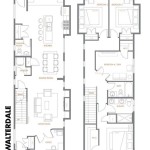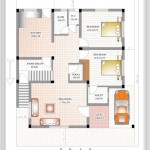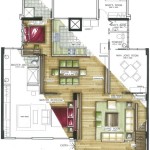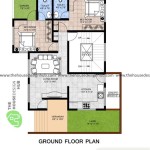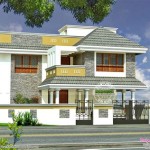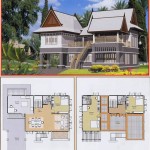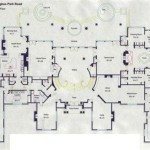Medieval Castle Style House Plans
The allure of medieval castles persists, inspiring modern architectural interpretations in residential homes. "Medieval castle style" encompasses a wide range of designs, from modest cottage-style dwellings with castle-inspired elements to grand residences replicating fortress-like structures. Understanding the key features of this architectural style is crucial for anyone considering building a castle-style home.
Key Features of Medieval Castle Style House Plans
Authenticity is rarely the goal in modern castle-style homes. Instead, these plans focus on evoking the romantic and imposing feel of a castle. Several architectural elements contribute to this aesthetic:
- Turrets: Often cylindrical or conical, turrets are a hallmark of castle architecture, adding visual interest and height.
- Crenellations: The notched battlements atop walls and towers evoke a sense of fortification and grandeur.
- Arched Windows and Doorways: Pointed or rounded arches are a staple of medieval architecture, lending a classic and elegant feel.
- Stone or Stone-like Facades: Stone, or materials mimicking stone, create the imposing and enduring look of a castle. Stucco, concrete, and manufactured stone veneer are common alternatives.
Types of Medieval Castle Style House Plans
Various sub-styles within the broader category of "medieval castle" house plans cater to different tastes and budgets. Understanding these distinctions helps narrow down design choices:
- Gothic Revival: This style emphasizes pointed arches, ribbed vaults, and intricate ornamentation, often incorporating stained or decorative glass windows.
- Romanesque Revival: Characterized by rounded arches, thick walls, and simpler detailing, this style offers a more robust and less ornate aesthetic.
- Scottish Baronial: This style features prominent turrets and crow-stepped gables, reflecting the unique architectural heritage of Scotland.
- French Chateau: Inspired by French country estates, this style often incorporates steeply pitched roofs, dormer windows, and decorative stonework.
Considerations for Building a Medieval Castle Style Home
Building a castle-style home presents unique challenges and opportunities. Careful planning and consideration are vital to ensure the project's success:
- Budget: The complexity and scale of castle-style homes often require significant investment. Realistic budgeting is essential from the outset.
- Location: The chosen site should complement the architectural style. A large plot of land, perhaps with some elevation, can enhance the castle's imposing presence.
- Materials: Choosing appropriate materials is crucial for achieving the authentic look and feel of a castle. Stone, brick, and timber are common choices.
Finding Medieval Castle Style House Plans
Locating suitable house plans is an essential first step. Several resources can assist in this search:
- Architectural Firms: Architects specializing in historical or custom home designs can create bespoke castle-style plans.
- Online Plan Databases: Numerous websites offer a wide selection of pre-designed house plans, including those inspired by medieval castles.
- Historical Societies and Libraries: These resources can provide inspiration and insights into authentic castle architecture.
Adapting Medieval Castle Style for Modern Living
While drawing inspiration from the past, modern castle-style homes must also incorporate the comforts and conveniences of contemporary living. Balancing historical aesthetics with modern functionality requires careful consideration:
- Floor Plans: Open-concept layouts can be incorporated within the castle aesthetic, creating a sense of spaciousness while retaining historical elements.
- Energy Efficiency: Modern insulation and energy-efficient windows and doors can be seamlessly integrated into the design.
- Technology Integration: Smart home technology, including security systems and entertainment systems, can be incorporated discreetly.
Interior Design for Medieval Castle Style Homes
The interior design should complement the exterior architecture, creating a cohesive and immersive experience:
- Furnishings: Heavy wooden furniture, tapestries, and wrought iron accessories enhance the medieval atmosphere.
- Color Palettes: Earthy tones, rich jewel tones, and warm neutrals create a sense of history and opulence.
- Lighting: Wrought iron chandeliers, wall sconces, and strategically placed lighting can create dramatic and inviting spaces.
Landscaping for Medieval Castle Style Homes
The landscaping surrounding a castle-style home is an extension of the architectural design. Creating a cohesive and historically appropriate landscape enhances the overall aesthetic:
- Courtyards: A central courtyard can serve as a focal point, providing a private outdoor space.
- Walls and Gates: Stone walls and imposing gates add to the sense of fortification and grandeur.
- Gardens: Formal gardens, herb gardens, and even kitchen gardens can contribute to the authentic atmosphere.

Burg Sooneck Is A Medieval Castle In Germany This Above The Rhein River Small But Well Preserved Floor Plan House Plans Layout

House Floor Plans Castle Plan

Home Ideas Castle Style House Plans Floor Plan Architectural
European Flair Castle House Plans Houseplans Blog Com

Dysart Castle House Plan Mansion

Castle House Plan 6 Bedrms Baths 9465 Sq Ft 116 1108
European Flair Castle House Plans Houseplans Blog Com

Balm Castle House Plans Luxury Home

Scottish Highland Castle 44071td Architectural Designs House Plans

Castle Floorplans Floor Plan Ashby In Northants England Layout How To


